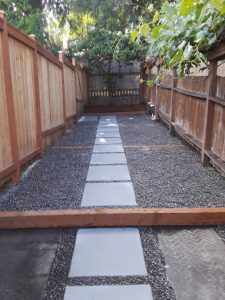How to Install Sod for a Lush, Instant Lawn
Installing sod is one of the quickest ways to achieve a lush, vibrant lawn. Unlike seeding, which takes time and patience, sod offers an instant green carpet that enhances your outdoor space immediately. Whether you’re revamping your yard or tackling a new landscaping project, following the right steps will ensure your sod thrives for years to come. Here’s a detailed guide to help you install sod like a pro.
Preparation is Key
Before laying sod, proper soil preparation is essential. Begin by removing debris, rocks, and weeds from the area where you’ll install the sod. Use a tiller to loosen the soil to a depth of 4-6 inches, improving its aeration and water retention. Level the ground to ensure an even surface, as uneven soil can cause drainage issues and patchy growth. To promote strong root development, apply a starter fertilizer evenly across the soil. These steps create the perfect foundation for your sod to take root and flourish.
Installing Sod the Right Way
Start the installation by measuring and marking the area with stakes and string to ensure precise coverage. Lay the first strip of sod along the longest straight edge, such as a driveway or sidewalk, to keep the alignment neat. Subsequent strips should be laid snugly against the first, staggering the seams like bricks to avoid gaps. Use a utility knife to trim the sod around curves, trees, or other obstacles. Once all the sod is in place, use a lawn roller or flat tool to press it down firmly, ensuring proper soil contact. Finish by watering the sod thoroughly—this is critical to help the roots establish themselves in the new soil.
Essential Aftercare
For the first few weeks after installation, consistent watering is crucial. Water your lawn daily to keep the soil moist but not waterlogged. Avoid walking on the sod until it has fully rooted, which typically takes two to three weeks. Once the grass is established, follow the recommended mowing and fertilization schedule for your grass type to maintain its health and vibrancy. Regularly monitor your lawn for pests, diseases, or signs of stress, and address any issues promptly to avoid long-term damage.
Tips for Success
Timing is an important factor when installing sod. For best results, lay sod during cooler months like spring or fall, as extreme heat can stress the grass before it roots. Choose a high-quality sod variety that matches your climate and soil conditions for optimal growth. Avoid walking on freshly laid sod, as this can disrupt its ability to establish strong roots. Patience and diligent care during the initial weeks will pay off with a stunning, low-maintenance lawn.
Additional Resources for DIYers
If you lack certain tools, such as a rototiller, consider renting one from a local hardware store. Use a moisture meter and pH tester to ensure your soil is well-aerated and falls within the ideal pH range of 6 to 7.5. For additional soil improvement, consider incorporating organic matter like compost or lime. With proper preparation, careful installation, and consistent maintenance, you can enjoy a lush, green lawn that elevates your outdoor living space. Happy sod installing!
Preparation
- Prepare the soil: Remove any debris, rocks, and weeds. Till the soil to a depth of 4-6 inches.
- Level the ground: Ensure the area is even and level.
- Lay down a starter fertilizer: Apply a starter fertilizer to promote healthy growth.
Installing Sod
- Measure and mark the area: Measure the length and width of your lawn area. Mark the corners with stakes and string.
- Lay the first strip: Begin by laying the first strip of sod along the longest straight edge (usually a sidewalk or driveway).
- Lay subsequent strips: Place subsequent strips of sod alongside the first strip, staggering the joints like bricks.
- Cut sod to fit: Use a utility knife or sod cutter to trim sod to fit around curves, trees, and other obstacles.
- Press the sod: Use a lawn roller or a flat tool to press the sod firmly into place, ensuring good contact with the soil.
- Water thoroughly: Water the sod immediately after installation, and keep it consistently moist during the first few weeks.
Aftercare
- Keep it watered: Water your sod regularly, but avoid overwatering.
- Maintain proper mowing and fertilization: Follow proper mowing and fertilization schedules for your grass type.
- Monitor for pests and diseases: Keep an eye out for common lawn issues and address them promptly.
Additional Tips
- Install sod during the cooler seasons (fall or spring) for best results.
- Use a high-quality sod that matches your local climate and grass type.
- Avoid walking on the sod until it’s had time to establish itself (usually 2-3 weeks).
By following these steps and tips, you’ll be enjoying a lush, green lawn in no time!
Additional Resources
- If you don’t have a roto tiller, you can rent one from the Home Depot’s tool rental center.
- Use a moisture meter and pH tester to ensure your soil is well-aerated and has a pH level between 6 and 7.5.
- Apply organic matter like fertilizer or lime to improve aeration and water retention.



















